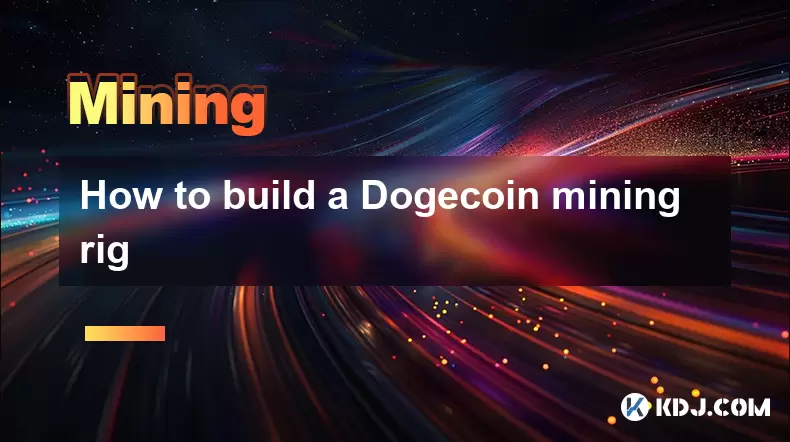-
 Bitcoin
Bitcoin $117,462.8204
-2.03% -
 Ethereum
Ethereum $3,061.1595
1.10% -
 XRP
XRP $2.9139
-2.19% -
 Tether USDt
Tether USDt $1.0002
0.02% -
 BNB
BNB $685.1357
-1.24% -
 Solana
Solana $161.3803
-2.11% -
 USDC
USDC $1.0002
0.04% -
 Dogecoin
Dogecoin $0.1948
-2.92% -
 TRON
TRON $0.2987
-0.89% -
 Cardano
Cardano $0.7330
-1.27% -
 Hyperliquid
Hyperliquid $47.7888
0.13% -
 Stellar
Stellar $0.4514
-2.93% -
 Sui
Sui $4.0169
2.74% -
 Chainlink
Chainlink $15.7088
-2.57% -
 Hedera
Hedera $0.2356
-3.33% -
 Bitcoin Cash
Bitcoin Cash $488.6656
-3.61% -
 Avalanche
Avalanche $21.2955
-1.47% -
 UNUS SED LEO
UNUS SED LEO $9.0415
0.42% -
 Shiba Inu
Shiba Inu $0.0...01332
-0.82% -
 Toncoin
Toncoin $3.0124
-0.62% -
 Litecoin
Litecoin $94.2175
-2.07% -
 Polkadot
Polkadot $4.0011
-0.61% -
 Monero
Monero $333.5714
-3.46% -
 Uniswap
Uniswap $9.1114
-1.56% -
 Dai
Dai $1.0000
0.02% -
 Ethena USDe
Ethena USDe $1.0005
0.00% -
 Bitget Token
Bitget Token $4.4951
1.87% -
 Pepe
Pepe $0.0...01242
0.47% -
 Aave
Aave $321.9943
0.51% -
 Bittensor
Bittensor $434.1984
5.13%
How to build a Dogecoin mining rig
A Dogecoin mining rig uses GPUs like the AMD RX 570 to solve Scrypt algorithm problems, requiring a strong PSU, proper cooling, and mining software for profitability.
Jul 15, 2025 at 06:43 pm

What is a Dogecoin Mining Rig?
A Dogecoin mining rig is a specialized computer system designed to solve complex mathematical problems and validate transactions on the Dogecoin blockchain. Unlike traditional computers, mining rigs are optimized for high computational performance while managing heat and power consumption efficiently. Since Dogecoin uses the Scrypt algorithm, miners need hardware that can handle this specific hashing function. The goal of building such a rig is to generate more Dogecoins than the cost of electricity and equipment over time.
Choosing the Right Hardware Components
Building a Dogecoin mining rig starts with selecting appropriate components. The most critical parts include the GPU (Graphics Processing Unit), as Scrypt-based mining heavily relies on GPU performance. Popular choices include the AMD Radeon RX 570 or NVIDIA GeForce GTX 1070, both of which offer a good balance between hash rate and energy efficiency.
The motherboard must support multiple GPUs, so look for models like the ASRock H81 Pro BTC or Biostar TB250-BTC, which provide multiple PCIe slots. A reliable power supply unit (PSU) with at least 600W–750W capacity is essential, especially when running multiple GPUs. Additionally, a basic CPU, minimal RAM (around 4GB DDR3), and a small SSD or USB drive for the operating system complete the core components.
Assembling the Mining Rig Frame
Once all components are gathered, assembling the rig involves mounting each part securely. Begin by installing the CPU and RAM onto the motherboard. Next, attach the GPU risers to the PCIe slots, ensuring they are properly connected via SATA cables to the power supply. Each GPU should be connected to the riser cards, allowing them to communicate with the motherboard without being physically inserted into it.
The entire setup should be mounted on a mining frame or open-air case to allow optimal airflow and prevent overheating. Make sure all cables are neatly managed and that the power supply is adequately ventilated. After assembly, double-check all connections before powering on the rig.
Installing the Operating System and Mining Software
After physical assembly, the next step is to install an operating system compatible with mining software. Many miners prefer Windows 10 due to its user-friendly interface and broad software support. Alternatively, Linux-based systems like Ubuntu offer lightweight performance and stability for long-term mining operations.
Once the OS is installed, download and configure mining software that supports the Scrypt algorithm. Popular options include CPUMiner-Multi, EasyMiner, or Cudo Miner. These programs connect your rig to a mining pool, where combined computing power increases the chances of earning Dogecoins. Configure the software with your wallet address, mining pool URL, and worker name before launching the miner.
Configuring the Mining Pool and Wallet
To start mining effectively, you must set up a Dogecoin wallet and register with a mining pool. A wallet stores your mined coins securely. Options include Dogecoin Core, Electrum-Doge, or hardware wallets like Ledger Nano S for enhanced security. Once the wallet is configured, note down the receiving address, which will be used in the mining software settings.
Joining a mining pool like Multipool or Prohashing allows you to combine resources with other miners. Register on the pool’s website, create a worker, and input the provided server address into your mining software. This setup ensures consistent payouts based on your contributed hash rate.
Frequently Asked Questions
Q: Can I mine Dogecoin with a CPU instead of a GPU?
While technically possible, CPU mining for Dogecoin is highly inefficient due to the Scrypt algorithm's design. GPUs offer significantly higher hash rates and better power efficiency, making them the preferred choice for mining Dogecoin profitably.
Q: How much electricity does a Dogecoin mining rig consume?
Power consumption depends on the number and type of GPUs used. On average, a single GPU consumes between 80W to 150W, and a multi-GPU rig can draw 500W to 1000W under full load. Always calculate electricity costs before starting to ensure profitability.
Q: Is it still profitable to mine Dogecoin in 2024?
Profitability depends on several factors including electricity costs, hardware efficiency, and Dogecoin’s market price. Due to increasing difficulty and competition, mining Dogecoin solo may not be profitable unless using low-cost electricity or joining a large mining pool.
Q: Do I need a dedicated internet connection for my mining rig?
No, a standard broadband connection is sufficient for mining operations. However, a stable and uninterrupted internet connection is important to maintain continuous communication with the mining pool and avoid loss of rewards.
Disclaimer:info@kdj.com
The information provided is not trading advice. kdj.com does not assume any responsibility for any investments made based on the information provided in this article. Cryptocurrencies are highly volatile and it is highly recommended that you invest with caution after thorough research!
If you believe that the content used on this website infringes your copyright, please contact us immediately (info@kdj.com) and we will delete it promptly.
- Solana Memecoins Hit the Big Time: PUMP and Sonic Get Coinbase Listing Boost!
- 2025-07-16 06:50:12
- Core Foundation's Rev+: Fueling Ecosystem Growth Through Revenue Sharing
- 2025-07-16 06:30:17
- Ripple, California, and Collaboration: A New Era for Crypto?
- 2025-07-16 06:30:17
- Uniswap, Mary-Catherine Lader, and the DeFi Evolution: What's Next?
- 2025-07-16 07:10:12
- Roman Storm, DPRK Hackers, and Prosecutors: A Tangled Web
- 2025-07-16 06:50:12
- Penguin Pump: Riding the $PENGU Wave in the Wild World of Crypto
- 2025-07-16 07:15:12
Related knowledge

How are crypto mining profits taxed?
Jul 14,2025 at 12:28am
Understanding Cryptocurrency Mining and TaxationCryptocurrency mining involves validating transactions on a blockchain network and earning rewards in ...

How to keep a mining rig cool
Jul 12,2025 at 01:42pm
Understanding the Importance of Cooling in Mining RigsCryptocurrency mining is an intensive process that places heavy demand on hardware components, p...

Can you mine crypto on a laptop?
Jul 16,2025 at 02:21am
Is It Feasible to Mine Cryptocurrency on a Laptop?Mining cryptocurrency on a laptop is technically possible, but feasibility depends heavily on the ha...

Is crypto mining worth it?
Jul 16,2025 at 01:21am
Understanding the Basics of Crypto MiningCrypto mining refers to the process of validating transactions on a blockchain network by solving complex mat...

How much does it cost to start crypto mining?
Jul 13,2025 at 12:22am
Understanding the Basic Costs of Crypto MiningStarting crypto mining involves several upfront and ongoing expenses. The primary costs include hardware...

What is the most profitable crypto to mine?
Jul 13,2025 at 07:00am
Understanding Mining Profitability in CryptocurrencyWhen evaluating the most profitable crypto to mine, it's essential to consider several factors tha...

How are crypto mining profits taxed?
Jul 14,2025 at 12:28am
Understanding Cryptocurrency Mining and TaxationCryptocurrency mining involves validating transactions on a blockchain network and earning rewards in ...

How to keep a mining rig cool
Jul 12,2025 at 01:42pm
Understanding the Importance of Cooling in Mining RigsCryptocurrency mining is an intensive process that places heavy demand on hardware components, p...

Can you mine crypto on a laptop?
Jul 16,2025 at 02:21am
Is It Feasible to Mine Cryptocurrency on a Laptop?Mining cryptocurrency on a laptop is technically possible, but feasibility depends heavily on the ha...

Is crypto mining worth it?
Jul 16,2025 at 01:21am
Understanding the Basics of Crypto MiningCrypto mining refers to the process of validating transactions on a blockchain network by solving complex mat...

How much does it cost to start crypto mining?
Jul 13,2025 at 12:22am
Understanding the Basic Costs of Crypto MiningStarting crypto mining involves several upfront and ongoing expenses. The primary costs include hardware...

What is the most profitable crypto to mine?
Jul 13,2025 at 07:00am
Understanding Mining Profitability in CryptocurrencyWhen evaluating the most profitable crypto to mine, it's essential to consider several factors tha...
See all articles

























































































